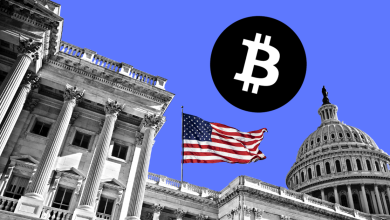
Regulatory Challenges and Potential Setbacks in the 2024 Cryptocurrency Landscape

As the year 2023 concludes, the cryptocurrency market has experienced significant upheavals, from high-profile legal cases, such as the trial of former FTX CEO Samuel Bankman-Fried, to notable leadership changes, including the resignation of Binance's former CEO, Changpeng 'CZ' Zhao. The United States, in particular, has been impacted by the confiscation of billions of dollars due to criminal charges and wire fraud allegations.
In response to these developments, there has been a growing call for comprehensive crypto regulation in 2024, viewed by many as essential for the market's stability. Despite this demand, industry experts express skepticism about the likelihood of legislative action in the coming year.
Key Legislative Proposals of 2023:
-
H.R. 4766: Clarity for Payment Stablecoins Act This bill introduces a detailed regulatory framework for stablecoins, emphasizing redeemable variants. It includes mandatory reserve holdings, restrictions on acceptable assets, and transparent redemption procedures. The proposed dual oversight system balances federal and state jurisdiction and addresses the role of subsidiaries of insured depository institutions. The bill also introduces a moratorium on specific stablecoins and outlines regulatory powers for federal and state entities.
-
The Lummis-Gillibrand Responsible Financial Innovation Act A bipartisan bill aiming to establish a comprehensive digital asset policy in the US. It mandates CFTC registration for crypto exchanges, limits stablecoin payments to banks or credit unions, and imposes strict penalties for violating anti-money laundering laws. Consumer protection is a focal point, with provisions for segregation and third-party custody to prevent scenarios similar to the FTX case. The bill also proposes increased funding for regulatory agencies and integrates crypto assets into existing financial taxation and reporting frameworks.
Challenges and Outlook for These Bills:
- The stablecoin bill faces opposition, notably from the White House and former Chair Maxine Waters, whose support is considered crucial for its progress.
- The Lummis-Gillibrand Act, while addressing broader financial innovation concerns, faces challenges, with only a 25% predicted chance of passage in 2024. Hurdles include potential SEC resistance and the uncertain position of Sen. Sherrod Brown.
Market analysts estimate a 60% to 75% likelihood of the stablecoin bill's passage in 2024, contingent on SEC Chair Gary Gensler's stance and potential legal challenges. The introduction of spot bitcoin ETFs could also be pivotal in legitimizing the crypto sector and fostering legislative action.
2024: A Year of Expectations and Uncertainties:
- The SEC's Staff Accounting Bulletin No. 121 will undergo congressional review, impacting the recording of customer crypto holdings.
- The 2024 elections could play a crucial role, potentially influencing the direction and momentum of crypto-related legislation.
As the cryptocurrency sector evolves, the industry eagerly awaits regulatory clarity. The outcomes of these legislative efforts are set to shape the future of digital assets in the United States, making 2024 a potentially transformative year in the realm of crypto regulation.



















